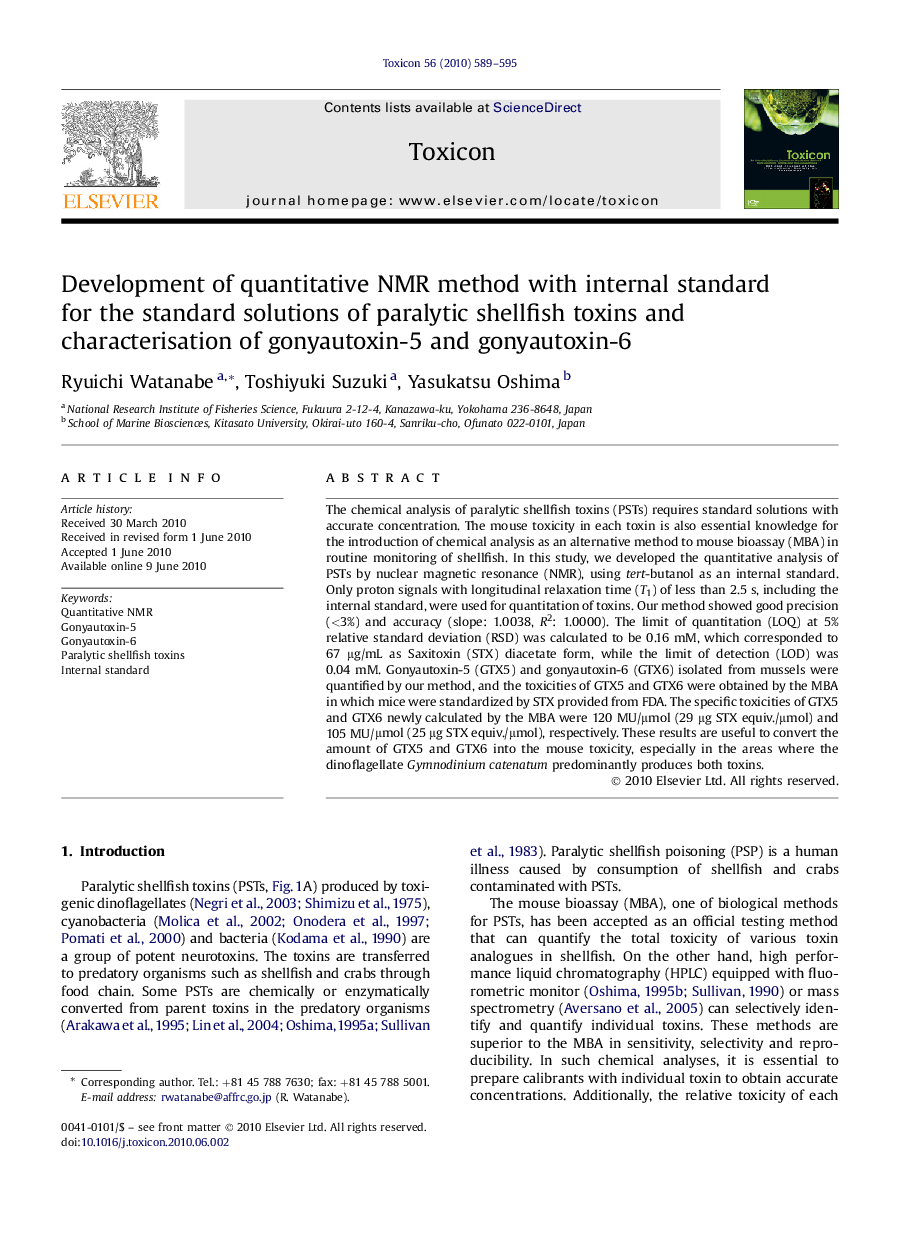| کد مقاله | کد نشریه | سال انتشار | مقاله انگلیسی | نسخه تمام متن |
|---|---|---|---|---|
| 2065137 | 1076906 | 2010 | 7 صفحه PDF | دانلود رایگان |

The chemical analysis of paralytic shellfish toxins (PSTs) requires standard solutions with accurate concentration. The mouse toxicity in each toxin is also essential knowledge for the introduction of chemical analysis as an alternative method to mouse bioassay (MBA) in routine monitoring of shellfish. In this study, we developed the quantitative analysis of PSTs by nuclear magnetic resonance (NMR), using tert-butanol as an internal standard. Only proton signals with longitudinal relaxation time (T1) of less than 2.5 s, including the internal standard, were used for quantitation of toxins. Our method showed good precision (<3%) and accuracy (slope: 1.0038, R2: 1.0000). The limit of quantitation (LOQ) at 5% relative standard deviation (RSD) was calculated to be 0.16 mM, which corresponded to 67 μg/mL as Saxitoxin (STX) diacetate form, while the limit of detection (LOD) was 0.04 mM. Gonyautoxin-5 (GTX5) and gonyautoxin-6 (GTX6) isolated from mussels were quantified by our method, and the toxicities of GTX5 and GTX6 were obtained by the MBA in which mice were standardized by STX provided from FDA. The specific toxicities of GTX5 and GTX6 newly calculated by the MBA were 120 MU/μmol (29 μg STX equiv./μmol) and 105 MU/μmol (25 μg STX equiv./μmol), respectively. These results are useful to convert the amount of GTX5 and GTX6 into the mouse toxicity, especially in the areas where the dinoflagellate Gymnodinium catenatum predominantly produces both toxins.
Journal: Toxicon - Volume 56, Issue 4, 15 September 2010, Pages 589–595